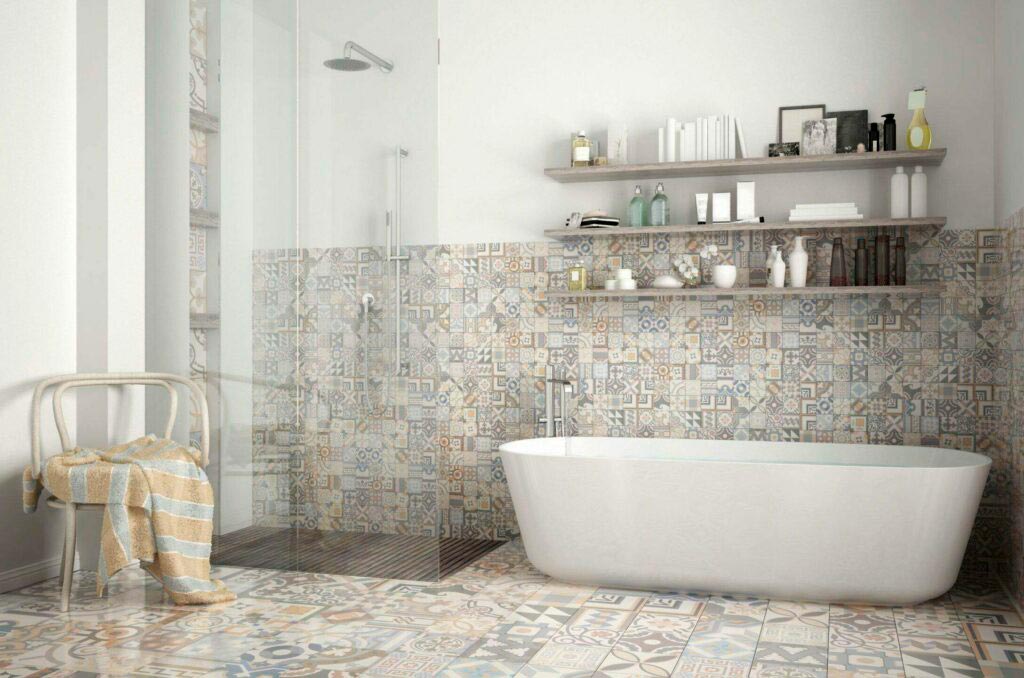Are you looking to refresh your bathroom but stuck wondering how to remove bathroom tile? You're not alone! Many homeowners face the overwhelming task of renovating their bathrooms without prior experience. Fortunately, this remarkable guide will walk you through the entire process and provide you with essential tips that can turn a tedious task into a manageable project.
Removing bathroom tiles can be a daunting job, especially if you've never attempted it before. However, with the right tools and steps, you can easily revitalize your space. Not only will removing old tiles make way for a new elegant look, but it also increases the overall value of your home. Are you ready to dive into the world of DIY renovations? Lets get started on this exciting journey!

Essential Tools Needed for Tile Removal
Before you start removing those stubborn tiles, it's crucial to gather all the necessary tools to make the task go smoothly.
- Crowbar: For prying off tiles.
- Tile Chisel: To help in breaking tiles.
- Putty Knife: For scraping off adhesive and grout.
- Hammer: To assist with the chisel work.
- Goggles: Protect your eyes from flying debris.
- Protective Gloves: To shield your hands.
- Dust Mask: To prevent inhaling dust and debris.
Step-by-Step Process to Remove Bathroom Tile
Now that youve gathered your tools, we can delve into the detailed steps on how to remove bathroom tile.
1. Assess the Tiles
Begin by evaluating the condition of the tiles. Are they cracked, chipped, or loose? Understanding their situation will help you decide the best removal method.
2. Prepare the Area
Clear the area of all non-fixed furniture, such as towels and floor mats. Ensure the workspace is well-ventilated, and cover adjacent surfaces to prevent any damage.
3. Cut Through the Grout
Using a grout saw or utility knife, cut through the grout around the tiles. This step is essential as it loosens the tiles and reduces the risk of damaging surrounding tiles.
4. Remove the First Tile
Start with a corner tile. Gently insert your crowbar or tile chisel underneath the tile and tap it with a hammer to create a small crack. Once you have a gap, you can lift the tile out.
5. Continue Removing Tiles
Once the first tile is removed, use the same method to remove the rest. Keep in mind that some tiles may be more stubborn than others.
Dealing with Adhesive and Grout Residue
After successfully removing the tiles, you may encounter leftover adhesive and grout. This residue can be a challenge but is easily manageable with a proper approach. Heres how:
- Putty Knife: Use it to scrape off most of the adhesive.
- Heat Gun: Applying heat can soften the adhesive, making it easier to remove.
- Commercial Adhesive Removers: Consider using these for tough spots (always follow safety precautions).
Safety Tips to Keep in Mind
Safety should always be your top priority when engaging in any DIY project. Here are some vital safety tips to consider:
- Work in a well-ventilated area to avoid inhaling dust.
- Always wear gloves to protect your hands.
- Goggles are critical to preventing eye injury from debris.
- If you're unsure about any step, consult a professional.
Market Analysis of the Best Bathroom Tiles
Once you've removed your bathroom tiles, its time to consider what to put back. Investigating which tiles are in vogue will minimize future hassles. For a guide on choosing the right bathroom tiles, you can find great suggestions at this link.

FAQs About Removing Bathroom Tile
1. Is removing bathroom tile a DIY project?
Yes, it is possible to remove bathroom tiles on your own, provided you have the right tools and follow the steps carefully.
2. How long will it take to remove the tiles?
The timeframe depends on the size of the area and how firmly the tiles are attached. On average, expect to spend several hours to a full day.
3. What is the best way to dispose of tiles?
Check local regulations for disposal; most tile remnants can be taken to a construction waste facility.
As an Amazon Associate, I earn from qualifying purchases.
For more tips and insights on bathroom renovations, check out our other blogs such as Tiling Guide and Painting Bathroom Tiles.






